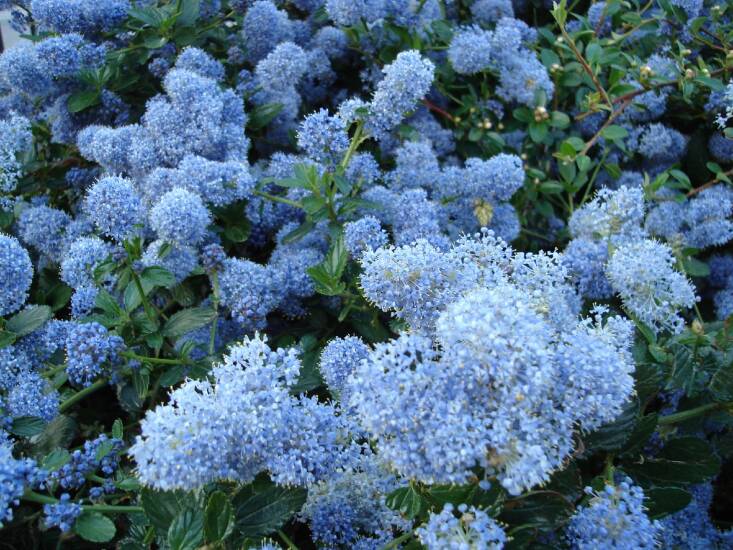California Lilac, Ceanothus
Are you a devotee of multitasking plants—meaning, you choose plants based on whether they serve many purposes? If your answer is yes, then I have a plant for you: California lilac. Not only are ceanothus colorful, but they are extremely low-thirst, low-maintenance, and pollinator-friendly. And though they burst forth with amazingly fragrant spring blooms, California lilacs are not related to true lilacs (Syringa).
Please keep reading to learn more about the other lilac:

California lilac is a large genus of diverse, helpful, flowering trees, shrubs, and ground covers. Many are native to North America—with more than half a dozen native to Oregon, and many others only to California, which explains its common name. Adding to this diversity, some species are evergreen and other deciduous. You can generally tell them apart visually because the evergreen varieties have smaller (sometimes toothed), darker, and leathery leaves while the deciduous ones have softer, larger leaves. The flowers on both are most often fragrant, quite showy, and pollinator-attracting. Flower color ranges from white to pink to purplish-blue and electric blue. This explosion of blooms usually happens March into May. The other difference among them are their habit and ultimate heights. Some grow into spectacular trees 18 to 20 feet tall, while others creep along the ground and make great ground covers for erosion control and weed suppression.

While most gardeners believe that ceanothus suffer from a moderately short lifespan of 10 years or so, this is not totally accurate. These plants can live long lives—as long as you don’t kill them with kindness. Pamper these plants and you accelerate their demise. The culprits? Overly rich soil and too much water, soil amendment, or fertilizer. An interesting note is that the reason you don’t want to overfeed these plants is that some members of the genus are able to form a symbiotic relationship with soil fungi and microbes, creating nitrogen-fixing root nodules, meaning they make their own food. Plus, bad fungal diseases can arise from too much water and improper drainage.

